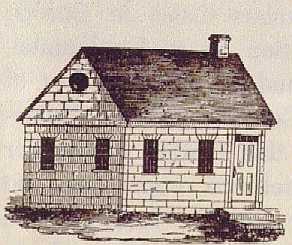
17th and 18th Century Latin Grammar Schools in America were often very modest, one-room structures in which young boys from the ages of six-seven through twelve-fourteen learned their Latin and Greek, often for eight hours a day. The teacher was called a "Master, and, often was a recent graduate of a nearby college. If there were a large number of students, there was also an assistant, called an "usher." The school day was long and the classroom was noisy since the education of the younger students was often part of the learning process of the more experienced students. The schoolroom was frequently cold and daylight often served as the only form of lighting. The school year was contingent upon the harvest season. The Latin language was learned to an advanced level, with students able to read such authors as Cicero, Vergil, Horace, and Ovid. Greek grammar was also studied with some progress made in New Testament Greek and traditional Greek authors such as Isocrates and Homer.